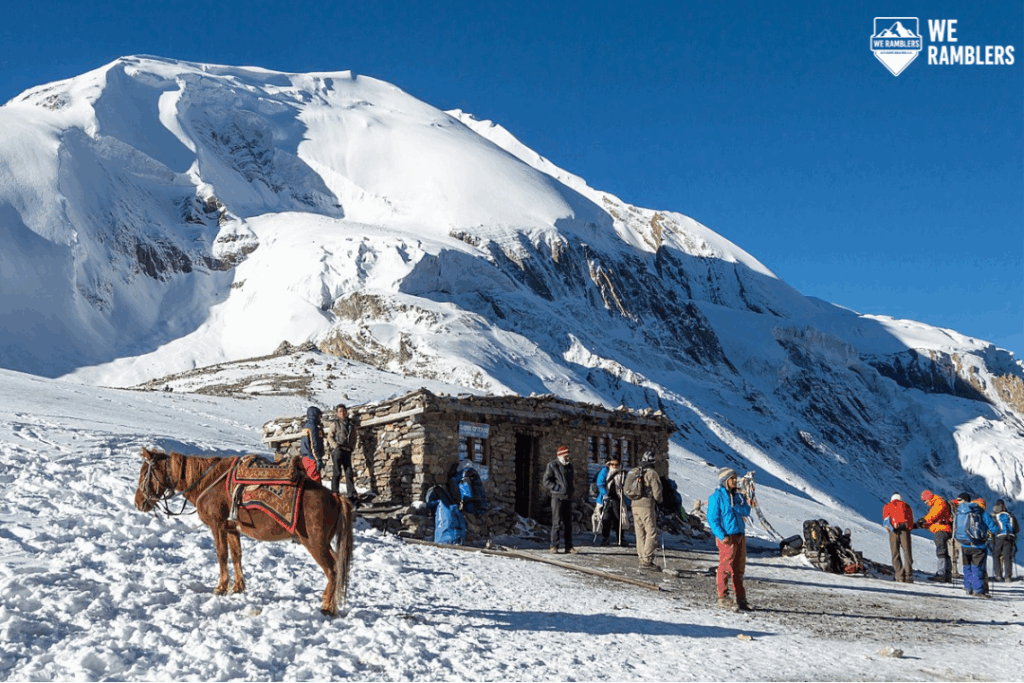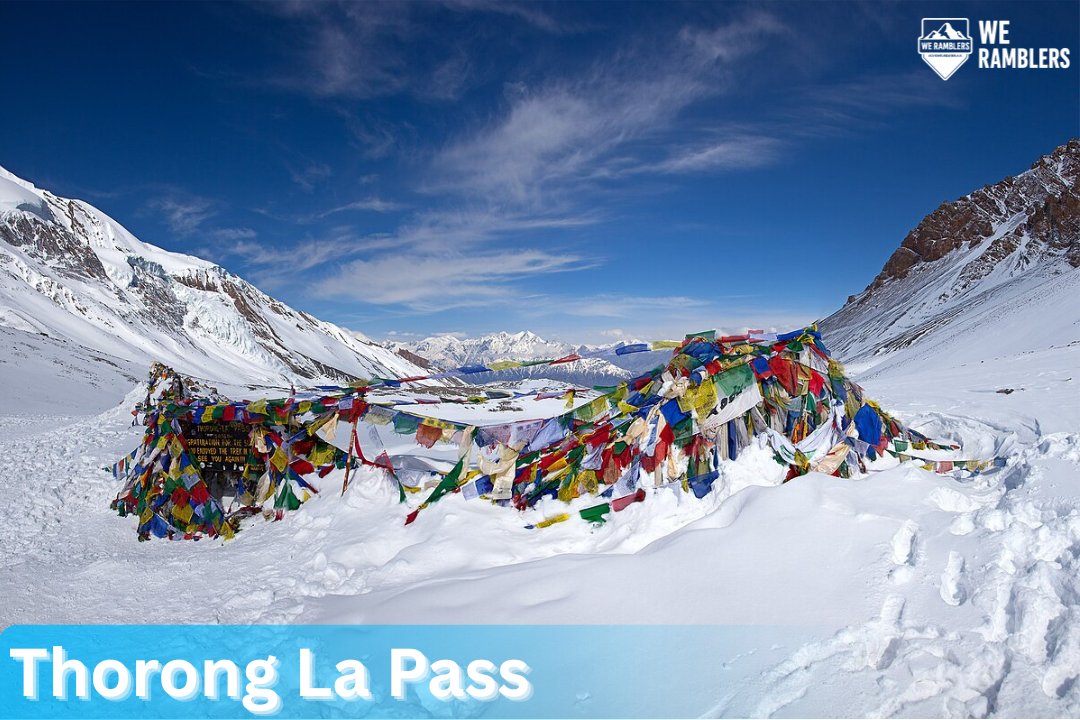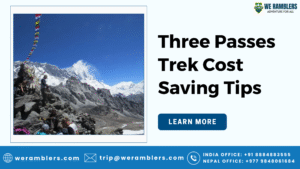Conquering Thorong La Pass: The Ultimate Annapurna Circuit Adventure
At a staggering 5,416 meters, Thorong La Pass is more than just a mountain crossing—it’s a rite of passage for trekkers. Situated within Nepal’s iconic Annapurna region, this legendary pass marks the highest point of the Annapurna Circuit Trek, offering one of the most unforgettable high-altitude challenges on Earth.
Recognized as the highest trekking pass in Nepal, Thorong La has earned a sacred spot on every serious trekker’s bucket list. Its remote beauty, spiritual significance, and dramatic terrain promise a journey through raw Himalayan wilderness and into ancient cultural landscapes. Along the way, expect to encounter timeless Buddhist monasteries, the sacred pilgrimage site of Muktinath, and panoramic Annapurna mountain views that defy description.
The adventure also offers a rare opportunity to experience the genuine warmth and resilience of Nepalese mountain communities. The camaraderie among fellow trekkers, combined with breathtaking sunrises, crystal-clear glacial streams, and rugged alpine trails, ensures this experience is as emotionally profound as it is physically demanding.
Why Thorong La is a Legendary Trek
There’s something almost mythical about the Thorong La Trek. As you ascend from the Marsyangdi Valley and cross into the Mustang region, the sheer drama of the landscape is astounding. The sweeping Annapurna mountain views, with peaks like Gangapurna, Annapurna II, and Dhaulagiri, create a sense of both awe and insignificance in the face of nature’s grandeur.
But the trek is more than just a visual spectacle. As part of the broader Annapurna Circuit Trek, Thorong La holds symbolic weight. It connects Buddhist and Hindu cultures, remote Himalayan villages, and a rich tapestry of landscapes. The revered Muktinath Temple, perched on the Mustang side, draws pilgrims from all over Nepal and India, offering blessings to those who’ve braved the crossing.
The challenging nature of the trail attracts seasoned hikers, photographers, and nature lovers alike, each hoping to capture the raw, untamed beauty of the Himalayas. The fusion of culture, spirituality, and adventure elevates this trek beyond a simple journey, making it a truly transformative experience for all who attempt it.
Best Time to Trek Thorong La
Choosing the best time to trek Thorong La can mean the difference between a magical experience and a hazardous ordeal.
- Spring (March to May) and Autumn (September to November) are the optimal seasons, with stable weather and crystal-clear skies revealing the full majesty of the Himalayas.
- Winter brings deep snow, making the pass treacherous and often impassable.
- Monsoon (June to August) introduces slippery trails, landslides, and leeches—not ideal for any trekker.
Altitude should never be underestimated. The tragic 2014 snowstorm, which claimed dozens of lives, is a stark reminder of how quickly weather and elevation can turn perilous. Always monitor conditions, and don’t push forward against local advice.
In addition to weather, seasonal festivals like Dashain or Tihar during autumn enhance the cultural immersion, offering trekkers a chance to witness local customs, vibrant decorations, and community celebrations that make trekking in Nepal even more memorable.
Thorong La Trek Itinerary Overview
A classic Thorong La trek itinerary spans 12–18 days, starting from Besisahar and ending in Jomsom or Pokhara, depending on your route.
Typical Route:
- Day 1–3: Besisahar → Chamje → Chame
- Day 4–6: Chame → Pisang → Manang
- Day 7–8: Acclimatization day in Manang (hikes to Ice Lake or nearby gompas)
- Day 9–10: Manang → Yak Kharka → Thorong Phedi
- Day 11: Thorong Phedi to Thorong La, descend to Muktinath
- Day 12–13: Muktinath → Jomsom (or continue to Tatopani via Marpha)
Optional Detour:
The Tilicho Lake trek, often done from Manang, adds 3–4 days. It’s demanding but spectacular—Tilicho is one of the highest lakes in the world, and the trail is breathtaking.
Some itineraries allow additional rest days for slower acclimatization or side trips to hidden monasteries and villages. Spending more time in these lesser-known spots enriches the journey, offering deeper cultural exchanges, quieter trails, and better chances to acclimatize properly before tackling the pass.
Physical Challenge & Altitude Realities
Crossing Thorong La Pass is not a casual hike; it’s a true high-altitude expedition. From the oxygen-thin air to the biting cold and steep switchbacks, every step above 4,000 meters tests your stamina and willpower.
The night before the summit is spent at Thorong Phedi (or High Camp for the daring), and trekkers usually begin the ascent before 4 AM to avoid high winds and ensure enough daylight for the descent. The push from Thorong Phedi to Thorong La is intense—expect a 900-meter climb followed by a long, knee-busting descent to Muktinath.
Symptoms of altitude sickness in Nepal—headaches, dizziness, nausea—can appear without warning. “Bistari, bistari” (slowly, slowly) is more than a saying; it’s a survival strategy.
Breathing exercises, mental preparation, and physical conditioning months in advance can significantly boost your resilience at altitude. Building endurance through cardio training and practicing hikes with loaded backpacks simulate real conditions, minimizing surprises on summit day.

Acclimatization & Safety Tips
Proper acclimatization is crucial. Spend at least two nights in Manang, a high-altitude village with a High Altitude Sickness Clinic where you can attend info sessions and health checks.
Safety Guidelines:
- Hydration is key—drink 3–4 liters per day.
- Eat high-carb meals to maintain energy.
- Consider taking Diamox (acetazolamide) as a preventive measure.
- Recognize symptoms early and descend if needed—Thorong La is no place to gamble with health.
For emergencies, ensure you have travel insurance covering high-altitude trekking, a working satellite phone or local SIM, and contact details for helicopter rescue services.
Carry a small oximeter to monitor your oxygen saturation daily, and always communicate openly with fellow trekkers and guides about how you’re feeling. Being honest about symptoms can prevent serious complications and ensure a safe, enjoyable trek.
Essential Packing List
Packing smart can be the difference between comfort and misery at altitude.
Must-Have Gear:
- Clothing: Thermal base layers, down jacket, fleece, windproof gloves, warm hat, quick-dry trekking pants
- Equipment: Trekking poles, headlamp, sunglasses, crampons (in winter), reusable water bottle with purification tablets or filter
- Essentials: Sunscreen, lip balm, snacks, energy gels, power bank, first-aid kit
Trekking Permits Nepal Requires:
- ACAP (Annapurna Conservation Area Permit)
- TIMS (Trekkers’ Information Management System)
Available in Kathmandu or Pokhara—bring passport copies and photos.
Don’t forget lightweight camp shoes for evenings, a lightweight sleeping bag rated for -10°C, and backup copies of your permits and travel insurance. Extra batteries and solar chargers are also invaluable, as power outages are common at higher altitudes.
Tea House Trekking in Nepal
The tea house trek Nepal system is a unique and welcoming aspect of the Annapurna Circuit. These family-run lodges offer cozy beds, hearty meals, and hot drinks, often with unbeatable mountain views.
What to Expect:
- Rooms: Basic, twin-sharing, usually unheated
- Meals: Dal bhat, momos, noodles, porridge, pancakes
- Extras: Firewood heating (paid), hot showers (occasionally solar-heated)
- Connectivity: Patchy mobile signal; WiFi available at a fee
Expect to spend $25–40/day, depending on location and season.
You’ll also share stories with trekkers from across the globe by the fireside, forming friendships and trading tips. Tea houses reflect the genuine hospitality of Nepali culture and often serve locally sourced meals that fuel your journey while supporting the local economy.
Solo vs Guided Trekking
Is Annapurna Circuit solo trekking a good idea? It depends on your experience and comfort in remote settings.
Going Solo:
- Pros: Flexible pace, budget-friendly, more authentic local interactions
- Cons: Navigational challenges, loneliness, limited support during emergencies
Nepal now requires guides for high-risk areas, though the Thorong La Trek can still be done solo as of 2025. Use offline GPS apps like Maps.me, and regularly update friends or family with your location.
Going with a Guide:
- Pros: Safety, cultural insight, support with logistics, no stress
- Cons: Higher cost, less spontaneity
Hiring a porter lightens your load, allowing better acclimatization. Many guides are locals who provide cultural stories, trail shortcuts, and emergency preparedness that enhance the entire trekking experience while directly supporting their livelihoods.
Culture & People of the Annapurna Region
The human tapestry along the Thorong La Trek is as captivating as the scenery. The lower trails are dotted with Gurung and Magar villages, while higher elevations transition into Thakali and Tibetan Buddhist communities.
Prayer wheels, chortens, and fluttering prayer flags mark the journey, infusing it with spiritual energy. Learn a few greetings like “Namaste” and “Tashi Delek,” and respect local customs, especially near monasteries and sacred sites.
Don’t miss visiting ancient gompas like Braga Monastery, interacting with yak herders, or witnessing traditional wool spinning and butter churning. These authentic cultural encounters offer rare glimpses into life in remote Himalayan communities unchanged for centuries.
Alternative Routes & Side Treks
Looking to spice up your Annapurna Circuit Trek? Consider these:
- Tilicho Lake Trek: From Manang, this high-altitude side trail leads to the stunning glacial lake at 4,919 meters. It’s tougher but worth it.
- Ice Lake: A beautiful day hike near Manang for acclimatization.
- Upper Mustang Extension: A restricted area requiring a special permit, but offers a raw, mystical Tibetan plateau landscape.
After Muktinath, many trekkers fly out of Jomsom airport or take a jeep to Tatopani for hot springs and relaxation.
Other lesser-known additions like Nar Phu Valley or Khopra Ridge add solitude and untouched vistas. These side treks present opportunities for off-the-beaten-path exploration while still connecting back to the grandeur of the main circuit.
Final Thoughts & Trekker Reflections
Crossing Thorong La Pass is more than a mountain adventure—it’s a personal journey of grit, wonder, and humility. As you stand atop the highest trekking pass in Nepal, flags fluttering in the icy wind and the Himalayas stretching endlessly around you, the world feels both vast and intimate.
Every sunrise behind snowcapped giants, every shared meal in a tea house, and every mindful step makes this trek unforgettable. If your heart longs for adventure, start planning your trekking in Nepal and conquer the mighty Thorong La Trek with confidence and reverence.
Plan Your Thorong La Trek with We Ramblers
For a seamless and well-organized Thorong La Trek experience, consider booking with We Ramblers. Our expert guides, carefully planned itineraries, and strong focus on safety ensure that trekkers can fully enjoy the breathtaking Annapurna landscapes without the logistical hassles. Whether you’re a solo adventurer or part of a group, contact us today to book your customized package that balances adventure, comfort, and cultural immersion.





